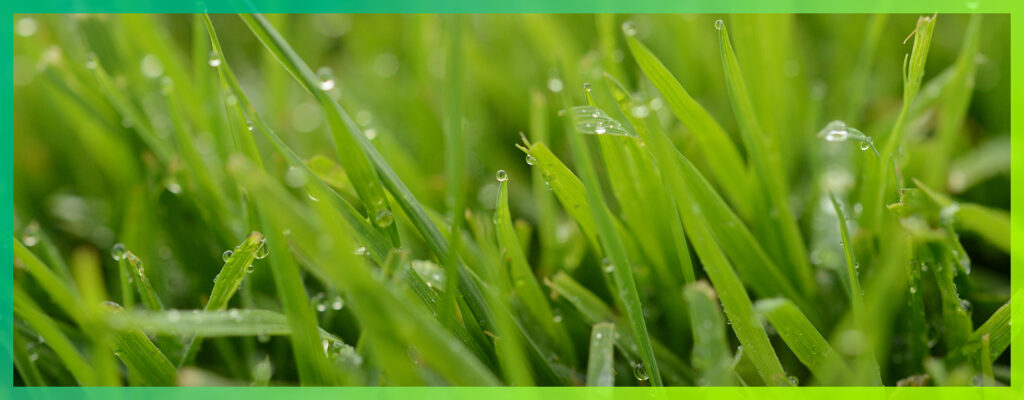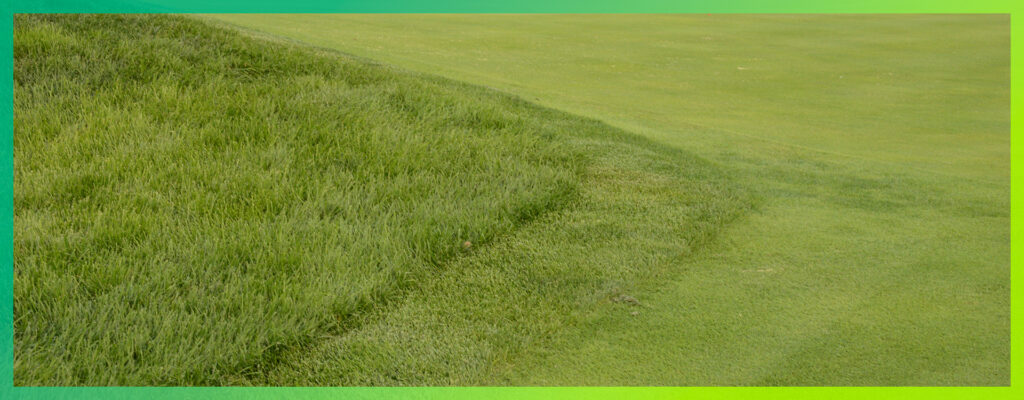There are many myths and misconceptions when it comes to calcium as an input for plant growth and development in turf. One is the old school theory that on sand-based golf course greens or athletic fields, where a high pH sand system of 6 or higher, constructed of calcareous sand, giving a 75 percent or better reading of calcium on a base saturation soil test, you will never have a calcium deficiency, because of natural mineralization in the soil. Another is you could have a couple of pounds of calcium per acre inch of water you’re irrigating with. All can be true, but they don’t tell the full story.
In a sand-based, high pH system which is common in our industry, there isn’t a lot of available organic matter to mineralize. Understanding your greens and adding nutrients to your soil to achieve mineralization are vital to ensuring the best results in the short and long term.

When we talk about deficiencies, there’s a fine line of having some available calcium to having enough for everything the plant needs to do on a day in and day out basis. The needs of a front yard are different than greens that are receiving 200 rounds a day, or a soccer field that is getting practice and game play every day of the week. Playing surfaces need to be great, and, if I’m not supplementing a calcium input to have professional conditions, then the greens may not be at their peak. For strong roots, stronger plants and their recovery, calcium must be a priority. Hoping for perfect soil conditions to create mineralization to keep a steady supply of calcium, or any nutrient flowing for that matter, is an unnecessary risk. Especially when all it takes is a couple ounces per thousand square feet on a bi-weekly spray program to give the plant what it needs.
Redox works with thousands of customers across the world, including golf, ag and sports turf. Those who have adopted a calcium input to improve plant performance and root development all say roots are deep and healthy, turf is easier to manage, there’s less disease pressure, battling through extreme temperatures takes less effort, and repair and recovery is there like never before.
There are many plant health benefits of calcium when managing turf on a golf course or a sports turf field. The most talked about are cell wall integrity, root development and soil structure. A balanced soil structure is critical for managing turf of any kind, but this article will focus on calcium and plant health benefits sometimes overlooked or misunderstood by turf managers.
The plant cell wall is a semirigid, permeable wall surrounding each plant cell. This formation is vital to overall plant health, especially on turf areas that receive an immense amount of traffic, along with extreme weather growing conditions.
As turf grows, new leaves are being developed every day. Uptake of calcium from the roots delivers the calcium up to the leaf, and the plant will send it to newer leaves that are being developed. Older leaves on their way-out can become calcium deficient and be more susceptible to disease pressure. This assumes you have a steady supply of plant available calcium in your soil system for the plant to be able to supply new leaves being developed to produce a strong cell wall, improve overall plant health, push new growth to repair and recover and help to withstand all the traffic that it is receiving.
The cell of the new leaves will develop with or without adequate levels of calcium, meaning you are going to have strong cell wall formation or weak cell wall formation. That all depends on the amount of available calcium in the soil system every day. Weak cell wall formation means more susceptibility to disease pressure, drought tolerance, lower photosynthetic activity, reduced traffic tolerance, the list goes on.

Plant available calcium in the soil for root development is another major factor for a healthy stand of turf.
Soils with low CEC, like sand-based greens and some athletic fields, typically have very low plant available calcium levels. Even native soils that make up tees and fairways that have higher CEC levels doesn’t guarantee you have higher levels of available calcium. Turf managers need to soil test and supplement calcium inputs as needed to maintain a healthy root system.
For the root to grow, it must put on new cells, and that new cell at the root meristematic tip is predominately made of calcium.
If there’s a lack of soluble calcium in the soil, you won’t have root growth or development.
In turf, a fibrous root system of delicate root hairs is what we want. The root hairs are what pulls water and nutrients out of the soil. You can do a great job of soil moisture management and fertilizing, but if your root system is weak or limited, your results will be weak and limited.
I have never met a turf manager who doesn’t want a better root system or a stronger plant. Applying a plant available source of calcium all season long is the new school way of growing turf.
The plant will decide what it needs to do with the calcium it takes up, our job is to keep a steady supply of it there.
Examples of rates:
USGA spec greens, low CEC, usually around 5 or less. Very Low plant available calcium.
TurfRx™ Ca 2-3 oz./1000 Biweekly applications.
Native soil tees/Fairways: with higher CEC soils usually around 20. Low plant available calcium. TurfRx™ Ca 1 to 2 oz./1000 monthly applications.
Sports Turf: Sand based low CEC soils.
TurfRx™ Ca 1 gal/acre monthly rates
Sports Turf: Higher CEC soils, around 20, Loamy/Clay type soils. TurfRx™ Ca 64 – 88 oz./acre monthly

Questions? Want to know more about An Inside Look at the Redox Research Farm?
Subscribe to receive our Redox Bio-Nutrients updates